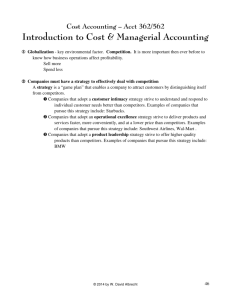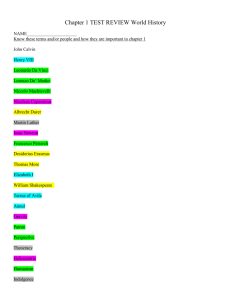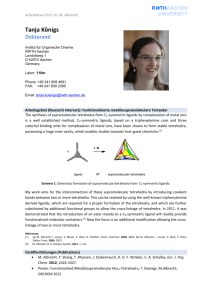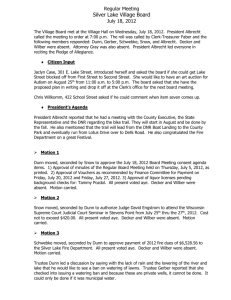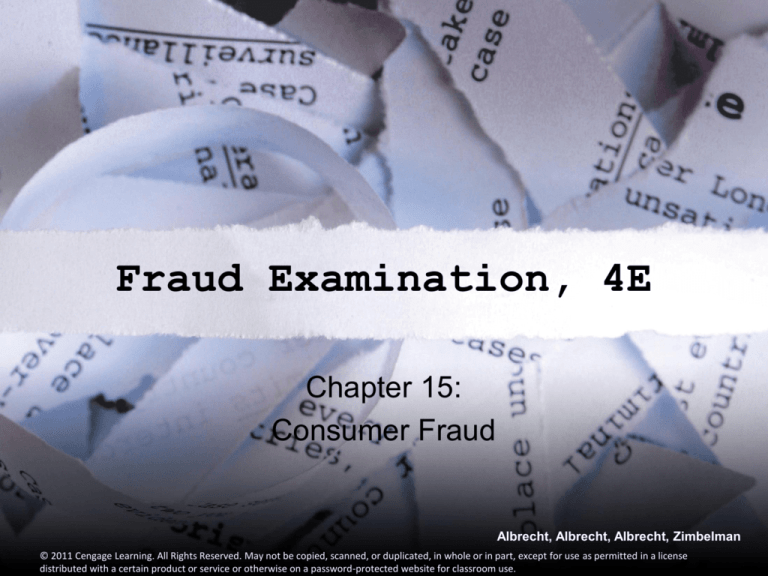
Fraud Examination, 4E
Chapter 15:
Consumer Fraud
Albrecht, Albrecht, Albrecht, Zimbelman
© 2011 Cengage Learning. All Rights Reserved. May not be copied, scanned, or duplicated, in whole or in part, except for use as permitted in a license
distributed with a certain product or service or otherwise on a password-protected website for classroom use.
Learning Objectives
Define what consumer fraud is and understand its
seriousness.
Understand identity theft.
Classify the various types of investment and
consumer frauds.
Albrecht, Albrecht, Albrecht, Zimbelman
© 2011 Cengage Learning. All Rights Reserved. May not be copied, scanned, or duplicated, in whole or in part, except for use as permitted in a license
Consumer Fraud
Definition
Any fraud where consumers are victims.
Albrecht, Albrecht, Albrecht, Zimbelman
© 2011 Cengage Learning. All Rights Reserved. May not be copied, scanned, or duplicated, in whole or in part, except for use as permitted in a license
Consumer Fraud
Two Primary Types of Consumer Fraud
1. Identity Theft – most common type of consumer
fraud, affecting thousands of people everyday.
2. Consumer Scams – fraudsters use various
schemes to earn consumer’s confidence and then
use that confidence to get the consumer to pay or
invest money or provide personal information.
Albrecht, Albrecht, Albrecht, Zimbelman
© 2011 Cengage Learning. All Rights Reserved. May not be copied, scanned, or duplicated, in whole or in part, except for use as permitted in a license
Consumer Fraud
Seriousness of the Problem
The US Federal Trade Commission released a statistical
survey in October 2007 with the following findings:
Nearly 30 million adults—13.5% of the adult population—
were victims of fraud during 2005.
20% of African American were victims
18% of Hispanics were victims
12 % of non-Hispanic whites were victims
Albrecht, Albrecht, Albrecht, Zimbelman
© 2011 Cengage Learning. All Rights Reserved. May not be copied, scanned, or duplicated, in whole or in part, except for use as permitted in a license
Consumer Fraud
Numbers of Victims in the Top 10 Frauds
1. Fraudulent weight-loss products – 4.8 million
2. Foreign lottery scams – 3.2 million
3. Unauthorized billing-buyers’ clubs – 3.2 million
4. Prize Promotions – 2.1 million
5. Work-at-home programs – 2.4 million
6. Credit card insurance – 2.1 million
Albrecht, Albrecht, Albrecht, Zimbelman
© 2011 Cengage Learning. All Rights Reserved. May not be copied, scanned, or duplicated, in whole or in part, except for use as permitted in a license
Consumer Fraud
7. Unauthorized billing-Internet
services – 1.8 million
8. Advanced free-loan scams – 1.2
million
9.Credit repair scams 1.2 million
10.Business opportunities—0.8
million
Albrecht, Albrecht, Albrecht, Zimbelman
© 2011 Cengage Learning. All Rights Reserved. May not be copied, scanned, or duplicated, in whole or in part, except for use as permitted in a license
Consumer Fraud
US FTC’s Response to Consumer Fraud
Consumer Sentinel – a complaint database
developed by the US Federal Trade Commission
that tracks information about consumer fraud and
identity theft and makes it available to law
enforcement partners across the US and
throughout the world.
www.sentinel.gov
Albrecht, Albrecht, Albrecht, Zimbelman
© 2011 Cengage Learning. All Rights Reserved. May not be copied, scanned, or duplicated, in whole or in part, except for use as permitted in a license
Identity Theft
Identity theft is used describe those circumstances when someone
uses another person’s name, address, Social Security number
(SSN), bank or credit card account number, or other identifying
information to commit fraud or other crimes.
40% of the frauds reported to the FTC over the last few
years have involved some type of identity theft.
Albrecht, Albrecht, Albrecht, Zimbelman
© 2011 Cengage Learning. All Rights Reserved. May not be copied, scanned, or duplicated, in whole or in part, except for use as permitted in a license
Identity Theft Cycle
Albrecht, Albrecht, Albrecht, Zimbelman
© 2011 Cengage Learning. All Rights Reserved. May not be copied, scanned, or duplicated, in whole or in part, except for use as permitted in a license
Identity Theft
How Identity Theft Occurs
Stage 1: Discovery
Gain Information Phase:
Searching trash
Stealing mail
Phishing
Scanning credit card information
Information Verification Phase:
Telephone scams (Pretexting)
Trash searches
Albrecht, Albrecht, Albrecht, Zimbelman
© 2011 Cengage Learning. All Rights Reserved. May not be copied, scanned, or duplicated, in whole or in part, except for use as permitted in a license
Identity Theft
Stage 2: Action
Accumulating Documentation Phase:
Perpetrator gets the tools to commit the fraud (applying for
credit cards, a driver’s license, or fake check in the victim’s
name)
Cover-up or Concealment Actions Phase:
Perpetrator takes steps to cover or hide the financial footprints
left throughout the identity theft process.
Example: Changing the billing address on a credit card so that
the statements go to the fraudster’s address.
Albrecht, Albrecht, Albrecht, Zimbelman
© 2011 Cengage Learning. All Rights Reserved. May not be copied, scanned, or duplicated, in whole or in part, except for use as permitted in a license
Identity Theft
Stage 3: Trial
1st Dimensional Actions Phase:
First attempts to test the stolen information.
If the test works, the fraudster attempts more
2nd Dimensional Actions Phase:
Actions taken after the tests are successful
The fraudster usually attempts face-to-face transactions
3rd Dimensional Actions Phase:
Fraudster opens bank accounts, establishes phone
accounts, secures auto loans, etc.
Albrecht, Albrecht, Albrecht, Zimbelman
© 2011 Cengage Learning. All Rights Reserved. May not be copied, scanned, or duplicated, in whole or in part, except for use as permitted in a license
Identity Theft
Personal Information Financial Gain
The perpetrator may…
Buy large-ticket items
Take out car, home, or other loans
Establish phone or wireless services
Use counterfeit checks or debit cards
Open new bank accounts
File for bankruptcy
Report victim’s name to police
Open new credit card accounts
Change victim’s mailing address
Albrecht, Albrecht, Albrecht, Zimbelman
© 2011 Cengage Learning. All Rights Reserved. May not be copied, scanned, or duplicated, in whole or in part, except for use as permitted in a license
Identity Theft
Stealing a Victim’s Identity
Dumpster diving
Skimming
Social engineering
Stealing wallets/purses
Sneak into a victim’s home and steal information
Shoulder surfing
Phishing
Steal mail
Albrecht, Albrecht, Albrecht, Zimbelman
© 2011 Cengage Learning. All Rights Reserved. May not be copied, scanned, or duplicated, in whole or in part, except for use as permitted in a license
Identity Theft
Minimizing the Risk
Guard your mail from theft
Opt out of preapproved credit cards
Check you personal credit information at least
annually
Guard Social Security card and number
Safeguard all personal information
Guard trash from theft
Protect wallet and other valuables
Protect the home, computer, passwords
Albrecht, Albrecht, Albrecht, Zimbelman
© 2011 Cengage Learning. All Rights Reserved. May not be copied, scanned, or duplicated, in whole or in part, except for use as permitted in a license
Identity Theft
Prosecution of Identity
Theft
When identity theft is
committed, the perpetrator
can be prosecuted criminally
and/or civilly.
For prosecution, it is
necessary to show the
perpetrator acted with intent
to defraud—usually easy to
prove if evidence of the fake
identity used to purchase an
item, open an account, or
obtain a credit card is
collected.
Albrecht, Albrecht, Albrecht, Zimbelman
© 2011 Cengage Learning. All Rights Reserved. May not be copied, scanned, or duplicated, in whole or in part, except for use as permitted in a license
Identity Theft
Once Identity Theft Occurs
Victims should…
Contact the Federal Trade Commission
Contact local FBI and/or US Secret Service agencies
Contact the credit reporting agencies
Contact the local Postal Inspection Service
Contact the Internal Revenue Service
Contact the Social Security Administration
Contact personal financial institutions
Change personal identification information
Albrecht, Albrecht, Albrecht, Zimbelman
© 2011 Cengage Learning. All Rights Reserved. May not be copied, scanned, or duplicated, in whole or in part, except for use as permitted in a license
Consumer &Investment Scams
Foreign Advance-Fee Scams
Nigerian Money Offers
Clearinghouse Scam
Purchase of Real Estate Scam
Sale of Crude Oil at below market price
Disbursement of money from wills
Albrecht, Albrecht, Albrecht, Zimbelman
© 2011 Cengage Learning. All Rights Reserved. May not be copied, scanned, or duplicated, in whole or in part, except for use as permitted in a license
Consumer & Investment Scams
© 2011 Cengage Learning. All Rights Reserved. May not be copied, scanned, or duplicated, in whole or in part, except for use as permitted in a license
distributed with a certain product or service or otherwise on a password-protected website for classroom use.
Consumer & Investment Scams
Work-at-Home Schemes
Multilevel Marketing
Pyramid Scheme
Chain Letter, Mail Stuffing,
Product Testing, and Craft
Assembly
Albrecht, Albrecht, Albrecht, Zimbelman
© 2011 Cengage Learning. All Rights Reserved. May not be copied, scanned, or duplicated, in whole or in part, except for use as permitted in a license
Consumer & Investment Scams
Bogus Mystery Shopping Scams
Perpetrators promise victims a job to stroll through stores,
enjoy the displays, shop for merchandise, and file reports
about their experiences.
Fraudsters promise victims compensation ranging from
$10–$40 an hour, plus the opportunity to keep all products
evaluated.
Although some mystery shoppers’ advertisements are
legitimate, the majority are not. Usually victims are conned
out of “application charge”.
Albrecht, Albrecht, Albrecht, Zimbelman
© 2011 Cengage Learning. All Rights Reserved. May not be copied, scanned, or duplicated, in whole or in part, except for use as permitted in a license
Consumer & Investment Scams
Telemarketing Frauds
Fraudsters set up giant rooms (referred to as boiler rooms)
in rented offices where they train salespeople to find and
defraud victims
Move from city to city using different names
Unwary investors lose about $1 million every hour to
investment fraud promoted over the telephone
Elderly are more susceptible to telemarketing fraud than
almost and other type of fraud.
Albrecht, Albrecht, Albrecht, Zimbelman
© 2011 Cengage Learning. All Rights Reserved. May not be copied, scanned, or duplicated, in whole or in part, except for use as permitted in a license
Consumer & Investment Scams
Safeguards Against
Telemarketing Frauds
Never give a Social
Security, credit card, or
other information over the
phone unless you initiate the
call.
Put your information on the
“do not call” registry
Albrecht, Albrecht, Albrecht, Zimbelman
© 2011 Cengage Learning. All Rights Reserved. May not be copied, scanned, or duplicated, in whole or in part, except for use as permitted in a license
Investment/Consumer Scams
Investment Scams
Unreasonable promised rates of return
Investments that do not make sound business sense
Pressure to get in early on the investment
Use of a special tax loophole or a tax avoidance scheme
A business with a history of bankruptcy or scandals
Albrecht, Albrecht, Albrecht, Zimbelman
© 2011 Cengage Learning. All Rights Reserved. May not be copied, scanned, or duplicated, in whole or in part, except for use as permitted in a license


